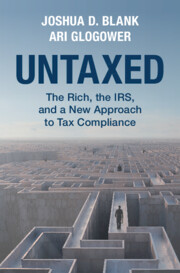Book contents
- Untaxed
- Untaxed
- Copyright page
- Dedication
- Contents
- Acknowledgments
- Introduction
- 1 Tax Noncompliance at the Top
- 2 How the Tax System Addresses Noncompliance
- 3 Means-Adjusted Tax Compliance
- 4 When Are Means Adjustments Fair and Efficient?
- 5 From Theory to Legal Design
- 6 Tax Penalties
- 7 Tax Advice
- 8 The Statute of Limitations
- 9 Tax Information Reporting
- 10 Closing the Tax Information Gap
- Conclusion
- Index
10 - Closing the Tax Information Gap
Published online by Cambridge University Press: 22 November 2024
- Untaxed
- Untaxed
- Copyright page
- Dedication
- Contents
- Acknowledgments
- Introduction
- 1 Tax Noncompliance at the Top
- 2 How the Tax System Addresses Noncompliance
- 3 Means-Adjusted Tax Compliance
- 4 When Are Means Adjustments Fair and Efficient?
- 5 From Theory to Legal Design
- 6 Tax Penalties
- 7 Tax Advice
- 8 The Statute of Limitations
- 9 Tax Information Reporting
- 10 Closing the Tax Information Gap
- Conclusion
- Index
Summary
This chapter outlines the advantages and limitations of both third-party and first-party reporting requirements. We begin by evaluating the Biden Administration’s 2021 bank information reporting proposal as an example of a third-party information reporting reform. Then, we provide a model for introducing first-party information reporting from high-end taxpayers regarding their finances through an annual wealth reporting form, which we call the Annual Net Asset Statement. Next, we introduce a hybrid system that incorporates both first- and third-party information reporting and explain how this system would have offered an alternative approach to the Biden Administration’s proposal for reporting inflows and outflows from financial accounts. Finally, we describe how this framework can help improve the tailoring of penalties for noncompliance in two areas: with information-reporting obligations, and in the use of audit resources. We explain how a means-adjusted approach can improve the operation of these information-reporting rules and complement the activity-based focus in current law.
Keywords
- Type
- Chapter
- Information
- UntaxedThe Rich, the IRS, and a New Approach to Tax Compliance, pp. 223 - 238Publisher: Cambridge University PressPrint publication year: 2024

